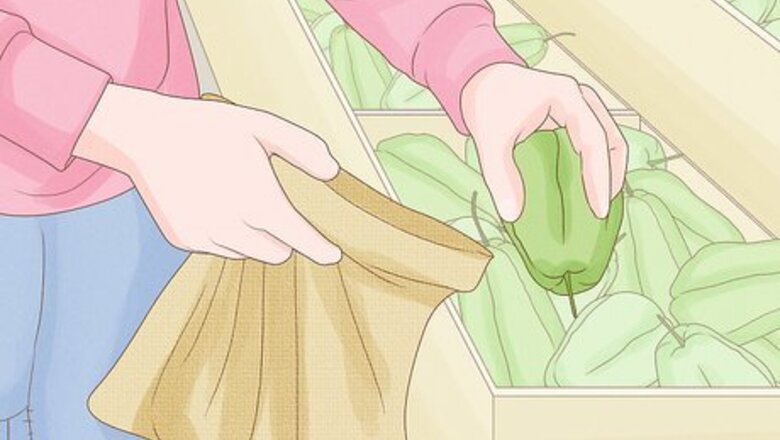
views
Sprouting the Chayote
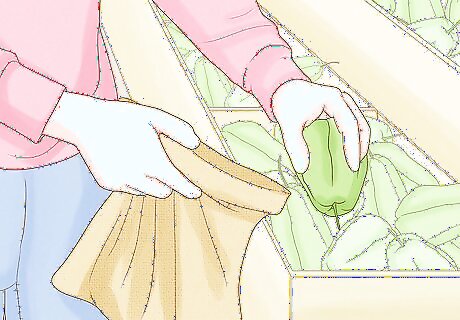
Buy a chayote fruit. Unlike most other members of the Cucurbitaceae family, the seed of the chayote will refuse to grow if it is separated from the fruit. So, in order to grow it, you first have to buy a fruit yourself. There are many varieties of chayote, including those with spines and those which are spineless. If you don't want to be pricked by a spiny fruit, wear gloves or select a spineless one. Various shops and most Asian grocery stores will have some in stock. Try not to pick ones that have begun to go brown and rot.
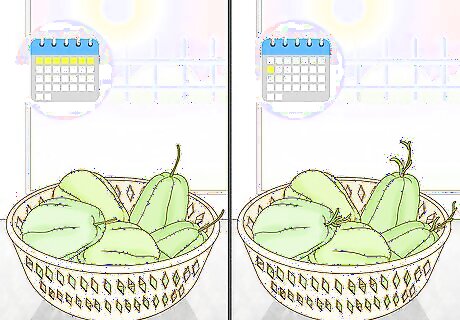
Leave your chayote in a sunny place away from all factors that could induce mouldiness or rotting. Within a week or two a slender green shoot should emerge from the end opposite from the attached stem.
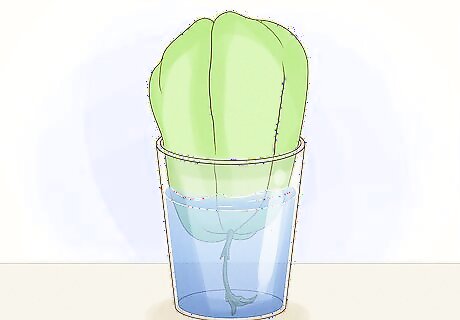
Choose to plant the entire fruit into soil or grow it further in water. To continue growing it in water, place the sprouted chayote into a jar big enough for the fruit to fit. Fill the jar with water until the water has almost completely submerged the fruit. Place the jar in a sunny place out of prolonged direct sunlight. Change the water regularly to prevent dirty water from initiating rot.
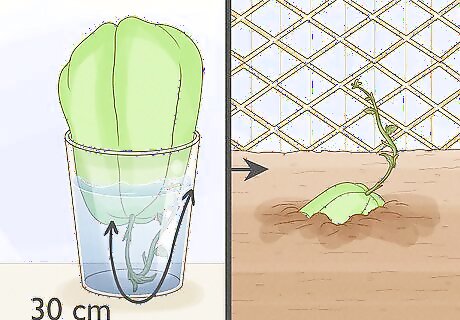
Transfer to the soil. Once the roots have developed healthily and the shoot reaches about 30 centimetres high, stake and plant in soil enriched with compost. Be sure that the actual 'fruit' part is buried under soil.
Caring for the Growing Vine
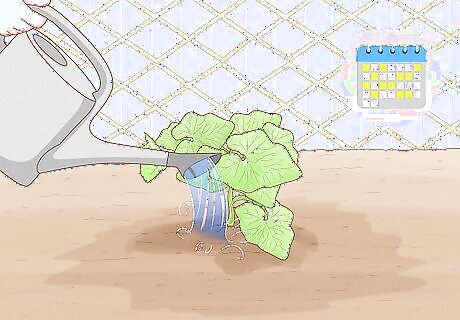
Water the chayote vine about three times a week, and more regularly in hot, dry conditions. Be sure to have placed the plant in a place where it is able to clamber onto a trellis; chayote vines are rampant climbers and will cover trellises in just about no time at all.
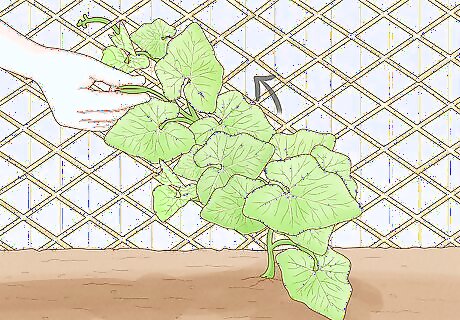
Guide the vine onto a large trellis where it can cover its expanse quickly once it has outgrown its stake. It is probably best to use a high, horizontal trellis, as this setup will ensure ease of harvesting the fruits. Avoid using ties or cords to secure it onto the trellis; its tendrils will attach it to the trellis naturally. Ties or cords can cut or damage the growing stem, as it is still soft and fragile.
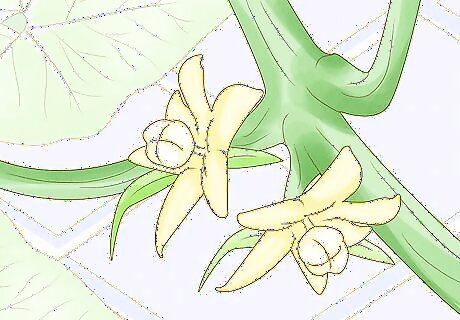
Wait for the chayote to flower. Once the plant has reached about 90 days of age, it should begin flowering and fruiting. There are both male and female flowers, just like those of their pumpkin, marrow and squash cousins, but unlike their large, bright flowers, chayote produces tiny, yellow, five or six-petaled flowers. The flowers are borne on the leaf axils; males form in clusters and females are solitary, with a visible ovary behind the flower. Natural pollinators should naturally pollinate the flowers, but on days where there is little pollination activity, you could hand pollinate them using a soft-bristled paintbrush to transfer pollen from the male flowers onto the female flowers. However, most of the time the flowers are naturally pollinated, and in a few days the petals will wither and the fruit will begin to grow.
Harvesting and Using the Chayotes
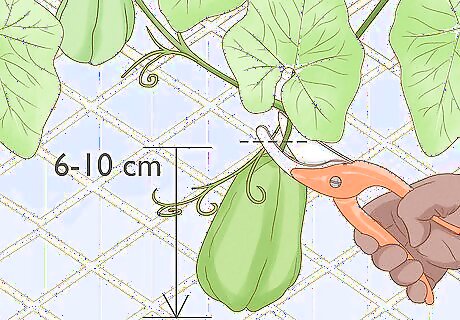
Harvest the chayotes. Chayote vines can produce many fruits within their lifetime, so one vine will produce enough harvest for a family. Harvest the chayote when the fruits are about 6-10cm in length and have a light greenish colour. Pull the fruit off the vine, carefully to avoid damaging or snapping the vine itself. If you somehow pull the fruit off, and it is without the stalk, hold it in a way so that the top is facing downward, as sap will come out of the fruit and can dry hard and irritate your hands. You may wish to wear gloves while picking chayotes. Avoid multicoloured fruits and white fruits (too old) and those which have excessive bruising or blemishing. The fruit should also be firm, not too soft or too hard.
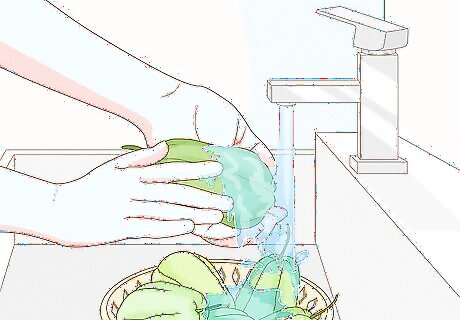
Wash the fruits. As with most fruits, when you have finished picking them it is best to wash them to eliminate any soil or dirt particles that may be present on the fruit. Then, cut the fruit in half and remove the seed on the inside. You can eat the seed, but it isn't as 'delicious' as the flesh. Peel the skin until you are left with two halves of the flesh. Remember to wear gloves while peeling and cutting to minimise the amount of sap getting on your skin.
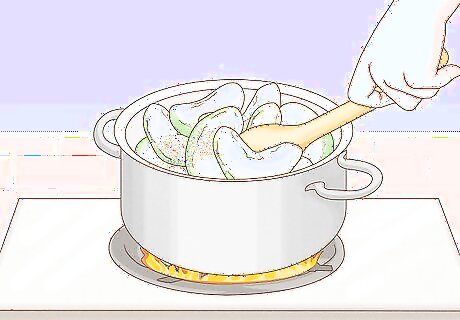
Cook the halves of chayote. You can put them in stews, steam them, stir-fry them and substitute them for pears and apples in some cases, such as in pies. Store all unused chayotes in the refrigerator.
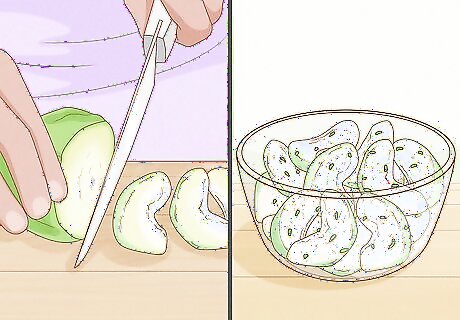
Eat chayote raw, as it has a crisp, juicy texture and a flavour that is mildly sweet. Peel the fruit first, of course, as you do not eat the skin. As well as the fruits, you can also eat the shoots, tubers, seeds, flowers and leaves. Almost the entire plant is edible! As you can see, versatility is this plant's area of expertise.


















Comments
0 comment